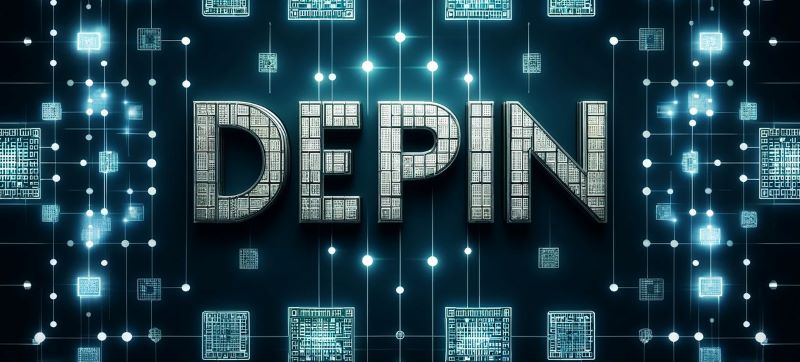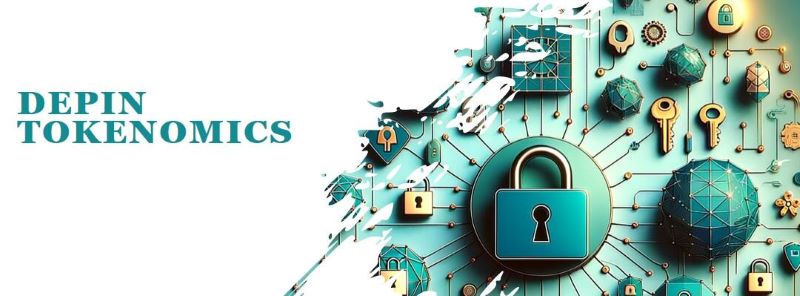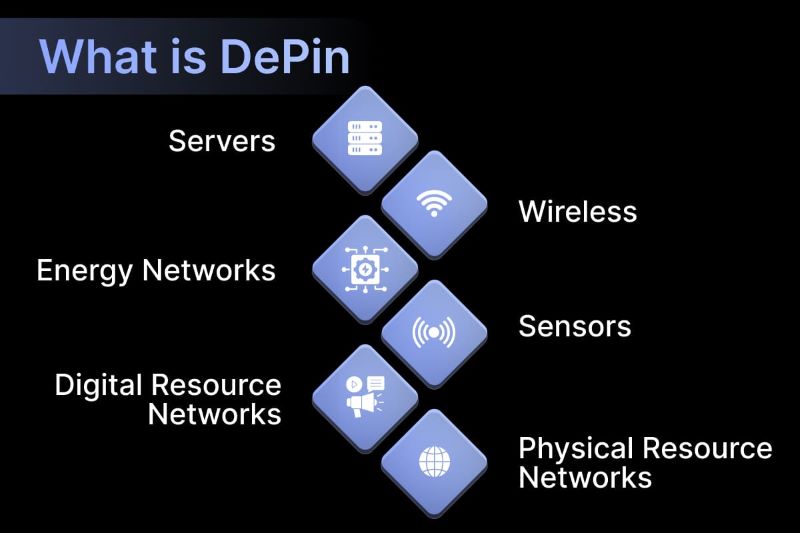In the rapidly evolving world of Web3, where blockchain technology is reshaping industries and redefining possibilities, a new and exciting concept is emerging: The DePIN business model. This innovative model promises to bridge the gap between the digital realm of blockchain and the tangible assets of the physical world, creating a decentralized and collaborative ecosystem that benefits everyone involved.
What is the DePIN business model?
Understanding DePIN
DePIN, short for Decentralized Physical Infrastructure Network, is a revolutionary approach to managing and utilizing physical assets. It leverages the power of blockchain technology to create a network where individuals and businesses can share their underutilized resources, such as computing power, storage capacity, or even energy grids. By doing so, DePIN fosters a more efficient, sustainable, and accessible infrastructure for the Web3 era.

The building blocks of DePIN
Let’s break down the core components that make the DePIN business model tick:
Physical infrastructure: At the heart of DePIN lies the physical assets that form the network’s backbone. These can include a wide array of resources, such as:
- Computing power: Idle computers, servers, or even specialized hardware like GPUs can be contributed to the network, providing computational resources for various applications.
- Storage devices: Individuals and businesses can offer their unused storage space on hard drives, SSDs, or cloud storage platforms to create a decentralized and resilient storage network.
- Energy grids: Renewable energy sources like solar panels or wind turbines can be connected to the DePIN, enabling peer-to-peer energy trading and promoting a greener future.
- IoT devices: Internet of Things devices, from smart home appliances to industrial sensors, can generate valuable data that can be shared and monetized within the DePIN ecosystem.
- Vehicles: Autonomous vehicles or even privately owned cars can become part of a decentralized ride-sharing or logistics network, optimizing transportation and reducing carbon emissions.
Blockchain integration: Blockchain technology acts as the trust layer and coordination mechanism for the entire DePIN network. Its key features play a crucial role in ensuring the smooth functioning of the system:
- Transparency: All transactions and interactions within the DePIN are recorded on the blockchain, providing a transparent and auditable history for all participants.
- Immutability: Once data is recorded on the blockchain, it cannot be altered or tampered with, ensuring the integrity and trustworthiness of the network.
- Smart contracts: Self-executing contracts with predefined rules automate processes within the DePIN, eliminating the need for intermediaries and reducing friction.
- Oracles: These trusted data feeds connect the blockchain to real-world events and information, enabling the DePIN to interact with and respond to external conditions.
Tokenization: Tokens are the fuel that powers the DePIN ecosystem. They serve multiple purposes, creating a dynamic and incentivized environment:

- Ownership and access rights: Tokens can represent ownership of physical assets or grant access to specific services within the network.
- Rewards and incentives: Providers are rewarded with tokens for contributing their resources, while consumers use tokens to pay for the services they utilize.
- Governance: Token holders can participate in decision-making processes, shaping the future direction of the DePIN.
The DePIN Workflow
Now that we understand the core components, let’s see how they interact within the DePIN business model:
- Providers join the network: Individuals or businesses with underutilized resources join the DePIN by onboarding their assets and setting their own terms for sharing them.
- Consumers access services: Users looking for specific resources or services, such as computing power or storage, connect to the DePIN and browse available offerings.
- Blockchain facilitates transactions: When a consumer finds a suitable provider, the blockchain handles the transaction securely and transparently. Smart contracts ensure that providers are fairly compensated, and consumers receive the services they paid for.
- Tokens drive the ecosystem: Tokens are used throughout the process, incentivizing providers to contribute their resources, enabling consumers to access services, and facilitating governance decisions.
The DePIN advantage: Why it matters
The DePIN business model offers several compelling advantages that make it a game-changer in the Web3 landscape:
- Decentralization: By shifting control from centralized entities to a distributed network of participants, DePIN creates a more resilient, censorship-resistant, and democratic infrastructure.
- Efficiency: DePIN optimizes resource allocation by directly connecting providers and consumers, eliminating intermediaries and reducing inefficiencies. This leads to cost savings, improved asset utilization, and a more sustainable approach to resource management.
- Innovation: DePIN unlocks a world of possibilities for new business models and services. Imagine decentralized cloud computing platforms, peer-to-peer energy sharing networks, or autonomous vehicle fleets powered by the DePIN business model.
- Sustainability: By incentivizing the use of renewable energy sources and energy-efficient technologies, DePIN contributes to a greener and more sustainable future.

Addressing the Challenges
While the DePIN business model holds immense promise, it’s important to acknowledge the challenges that lie ahead:
- Scalability: As DePIN networks grow, ensuring they can handle a large number of participants and resources without compromising performance is crucial.
- Security: Robust security measures are essential to protect the network from attacks and vulnerabilities, safeguarding both providers and consumers.
- Regulation: As DePIN blurs the lines between traditional industries and the decentralized world, clear regulatory frameworks are needed to foster innovation while ensuring consumer protection.
The Future of DePIN
The DePIN business model is still in its early stages, but its potential is undeniable. As blockchain technology matures and adoption grows, we can expect to see DePIN networks emerge across various industries, transforming the way we interact with the physical world.
Whether you’re a tech enthusiast, an entrepreneur, or simply curious about the future of Web3, the DePIN business model is a concept worth exploring. By understanding its intricacies and potential, you can position yourself at the forefront of this exciting new frontier.
Conclude
The DePIN business model is more than just a technological marvel; it is a catalyst for change, poised to reshape industries and empower individuals around the world. As we move towards a decentralized and sustainable future, DePIN is a beacon of innovation. Hopefully, this article on the DePIN business model by Financial Insight Daily will help you better understand this technological model.
